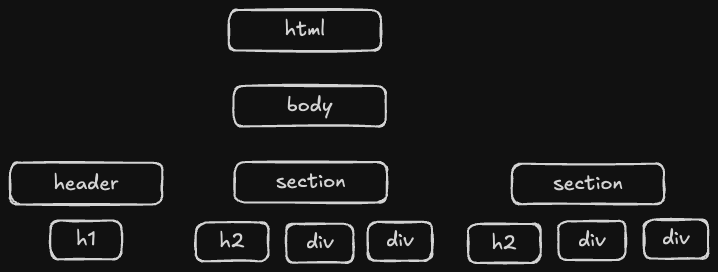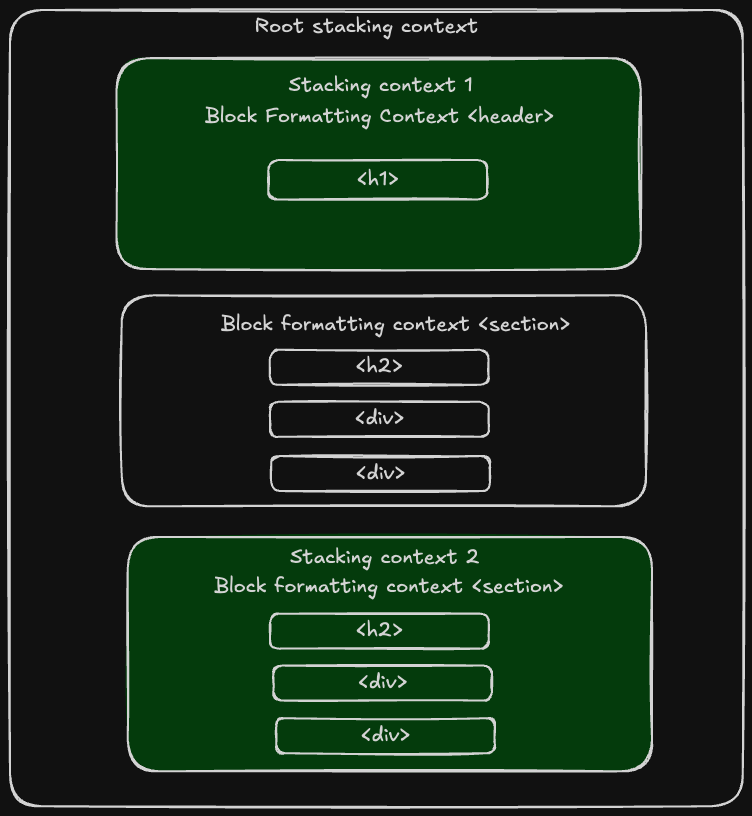Quick overview of stacking context
•1 min read
Stacking context 決定元素在 z 軸上的排序,常見創建 stacking context 情況:
- 根元素
<html> position: absoluteposition: fixedposition: stickyposition: relative且z-index值不為autoopacity小於1transform,scale,rotate- Flex-item, 且
z-index不為auto - Grid-item, 且
z-index不為auto will-change不為初始值
規則:
- 根元素
<html>自動形成 stacking context,其子元素則根據特定屬性,形成新的 stacking context - 在同一個 stacking context 內,使用
z-index值進行比較,較大的z-index在上方,值相同則按照的出現順序排列 (後者在上方) - Stacking context 內部的元素,不會影響到其外部的 stacking context,反之外部 stacking context 的元素,也不會影響到內部的 stacking context(適當隔離,可以減少 reflow 及 repaint 的次數)
With a basic example
<html>
<body>
<header style="position: sticky; z-index: 100;">
<h1>Title</h1>
</header>
<section>
<h2>First section</h2>
<div>Item 1</div>
<div>Item 2</div>
</section>
<section style="position: absolute;">
<h2>Second section</h2>
<div>Item 1</div>
<div>Item 2</div>
</section>
</body>
</html>
